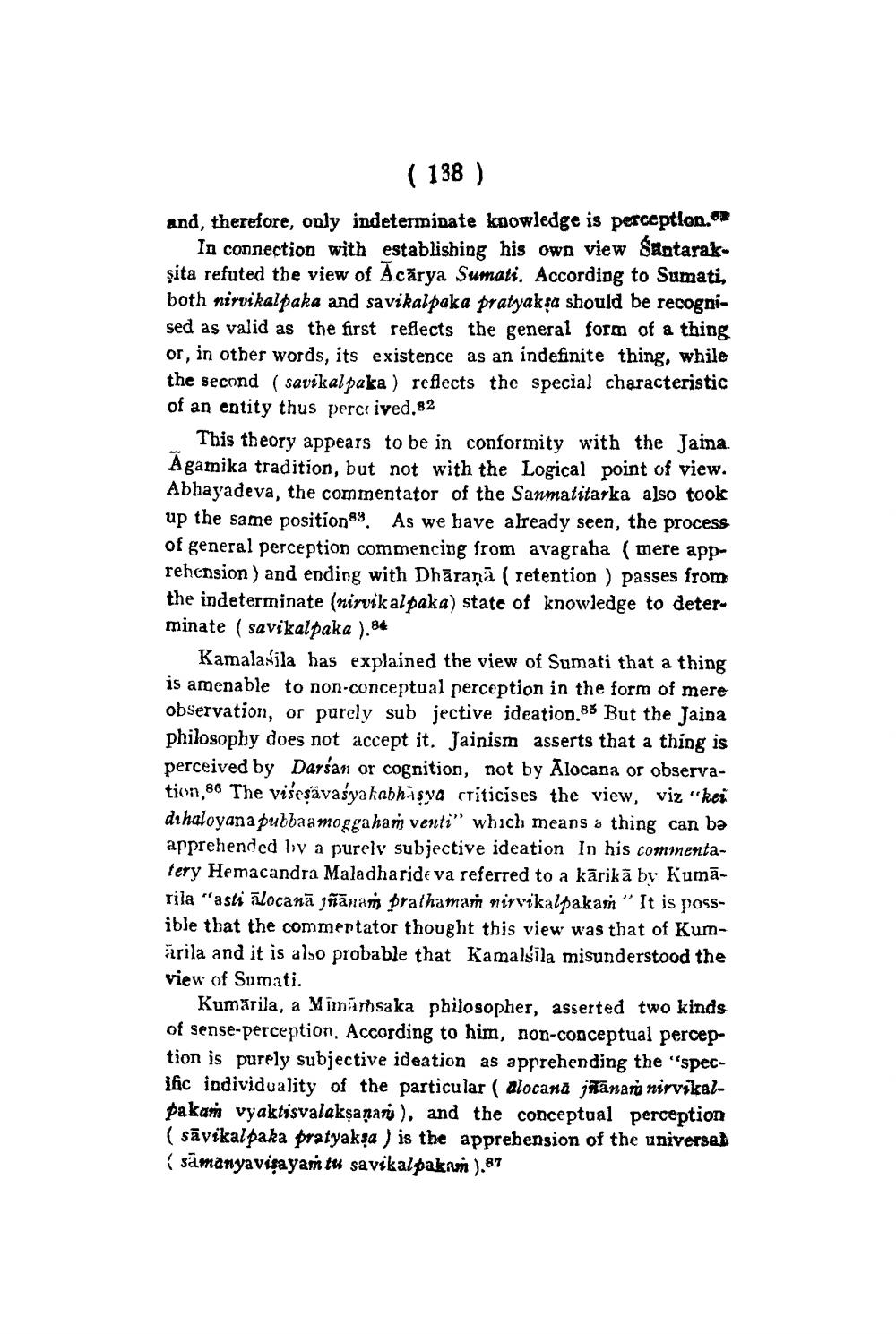________________
( 138 )
and, therefore, only indeterminate knowledge is perception.** In connection with establishing his own view Santarakşita refuted the view of Acarya Sumati. According to Sumati, both nirvikalpaka and savikalpaka pratyakṣa should be recognised as valid as the first reflects the general form of a thing or, in other words, its existence as an indefinite thing, while the second (savikalpaka) reflects the special characteristic of an entity thus perceived.82
This theory appears to be in conformity with the Jaina. Agamika tradition, but not with the Logical point of view. Abhayadeva, the commentator of the Sanmatitarka also took up the same position. As we have already seen, the process of general perception commencing from avagraha (mere apprehension) and ending with Dharana (retention ) passes from the indeterminate (nirvikalpaka) state of knowledge to determinate (savikalpaka ).84
Kamalasila has explained the view of Sumati that a thing is amenable to non-conceptual perception in the form of mere observation, or purely sub jective ideation.85 But the Jaina philosophy does not accept it. Jainism asserts that a thing is perceived by Darsan or cognition, not by Alocana or observation,86 The visesavasyakabhasya criticises the view, viz "kei dihaloyana pubbaamoggaham venti" which means a thing can be apprehended by a purely subjective ideation In his commentatery Hemacandra Maladharide va referred to a karika by Kumārila "asti alocanā jñānam prathamam nirvikalpakaṁ "It is possible that the commentator thought this view was that of Kumarila and it is also probable that Kamalsila misunderstood the view of Sumati.
Kumarila, a Mimamsaka philosopher, asserted two kinds of sense-perception. According to him, non-conceptual perception is purely subjective ideation as apprehending the "specific individuality of the particular ( alocana janam nirvikalpakam vyaktisvalakṣaṇari), and the conceptual perception (savikalpaka pratyaksa) is the apprehension of the universal (samanyavişayam tu savikalpakam ).87




